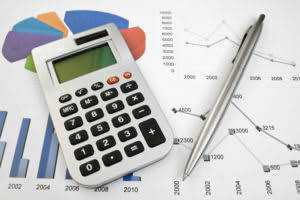Liabilities are any debts your company has, whether it’s bank loans, mortgages, unpaid bills, IOUs, or any other sum of money that you owe someone else. If you’ve promised to pay someone a sum of money in the future and haven’t paid them yet, that’s a liability. In other words, the creditor has the right to confiscate assets from a company if the company doesn’t pay it debts.

Debt itself is unavoidable, especially if you’re in a growth phase—but you want to ensure that it stays manageable.
Overview: What are liabilities?
FreshBooks’ accounting software makes it easy to find and decode your liabilities by generating your balance sheet with the click of a button. Current liabilities, also known as short-term liabilities, are financial responsibilities that the company expects to pay back within a year. Assets are broken out into current assets (those likely to be converted into cash within one year) and non-current assets (those that will provide economic benefits for one year or more).
- However, if the number is too high, it could mean the company is not leveraging its assets as well as it otherwise could be.
- Using accounting software can help ensure that each journal entry you post keeps the formula in balance.
- Sometimes, companies use an account called other current liabilities as a catch-all line item on their balance sheets to include all other liabilities due within a year that are not classified elsewhere.
- A formal loan agreement that has payment terms that extend beyond a year are considered notes payable.
- In contrast, the table below lists examples of non-current liabilities on the balance sheet.
- For example, many businesses take out liability insurance in case a customer or employee sues them for negligence.
- The impact of these liabilities can significantly influence a company’s financial statements, making it essential for businesses to monitor, manage and strategically plan their liability structure.
Most contingent liabilities are uncommon for small businesses, but here are some that you might encounter. US GAAP requires some businesses to disclose or report contingent liabilities. Small businesses that aren’t required to comply with the US GAAP may opt not to consider contingencies in financial reporting.
Assets = Liabilities + Equity
Besides his extensive derivative trading expertise, Adam is an expert in economics and behavioral finance. Adam received his master’s in economics from The New School for Social Research and his Ph.D. from the University of Wisconsin-Madison in sociology. He is a CFA charterholder as well as holding FINRA Series 7, 55 & 63 licenses. He currently researches and teaches economic sociology and the social studies of finance at the Hebrew University in Jerusalem. There’s a lot of hidden costs invested in a product by the time you sell it. My Accounting Course is a world-class educational resource developed by experts to simplify accounting, finance, & investment analysis topics, so students and professionals can learn and propel their careers.
Sometimes, companies use an account called other current liabilities as a catch-all line item on their balance sheets to include all other liabilities due within a year that are not classified elsewhere. Liabilities in accounting are crucial for understanding a company’s financial position. They represent obligations or debts that a business owes to other parties, such as suppliers, lenders, and employees. Liabilities can take various forms, like loans, mortgages, or accounts payable, and play a significant role in determining a company’s financial health and risk. They are vital components of a balance sheet, which is one of the primary financial statements used by stakeholders to assess a company’s performance and sustainability.
Type 2: Principle & interest payable
However, unlike liabilities, equity is not a fixed amount with a fixed interest rate. The assets are the operational side of the company, basically a list of what the company owns. Everything listed there is an item that the company has control over and can what accounts are liabilities use to run the business. Liabilities can be described as an obligation between one party and another that has not yet been completed or paid for. They are settled over time through the transfer of economic benefits, including money, goods, or services.
